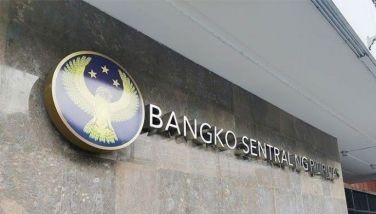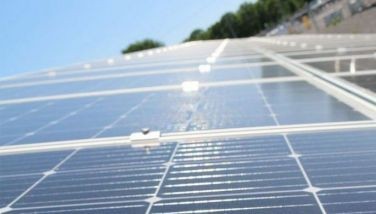Department of Agriculture seeks foreign investors for high-value crops, marine projects

MANILA, Philippines - The Department of Agriculture (DA) is lining up big-ticket, high-value crops and marine projects for potential ventures by foreign investors in the country.
In separate briefings last week for visiting business delegations from South Korea and Thailand, Agriculture Secretary Arthur Yap pointed to the high-value commercial crops (HVCC) sub-sector which includes bananas, pineapples, mangoes and coconuts as among the preferred investment areas, along with the biofuels and marine sectors.
According to Yap, the HVCC offers opportunities for investors in the areas of post-harvest and processing facilities and expansion areas for production and physical infrastructure.
For bananas, Yap said investment opportunities include expansion of production areas; banana processing into flour, cereals and vinegar; banana production and processing into inulin; packaging equipment; logistics; research and development and farm-to-market roads (FMRs).
“Bananas are a particularly desirable commodity because the Philippines has already established itself as one of the top banana-producing and exporting countries in the world,” he noted.
Yap said world demand for bananas is quite high, with Japan importing almost 1.2 million metric tons; Russia, 863,000 MT and China, almost 409,000 MT.
The Philippines supplies around 12 percent of the global market for bananas, with exports reaching $404 million in 2007. The Philippines ranks second to Ecuador (four million MT) in terms of volume exported at 2.3 million MT.
Among all the fruits grown in the Philippines, bananas have the highest yield at 6.8 million MT. Banana production grew 7.8 percent in 2006, with cavendish bananas accounting for 41.37 percent of total.
Furthermore, Yap said the Philippines is also the world’s number one banana chip exporter with 38,000 MT valued at $36 million sold to overseas markets in 2007.
Mangoes, which can be processed into a number of products such as puree, juice, dried fruit and concentrates, offer opportunities in developing irradiation facilities, extended hot water treatment tanks, freeze drying facilities, individual quick-frozen products and processing plants, Yap said.
He said while even Mexico has started producing mangoes, Philippines mangoes are among the finest in the world and the third most important fruit crop based on export volume and value.
“It is so good that 93 percent of our produce are consumed locally. Investments in mangoes, therefore, are very lucrative since the Philippines’own domestic market supports the commodity,” Yap said.
The Philippines ranks seventh among the world’s mango producing countries.
Investment opportunities in pineapple, meanwhile, include expansion of production areas, research and development towards effective pest management, processing facilities and packing houses, as well as FMRs.
The Philippines ranks third in pineapple production, next to Brazil and Thailand, accounting for 10 percent of the world’s supply. Fresh and processed exports of pineapples were valued at $56 million and $166 million, respectively.
Pineapples, mostly grown in Mindanao, can be processed into juice, jellies and jams, dried fruit, pineapple vinegar and fruit cocktail. The expensive piña or pineapple fiber can be used to make the barong Tagalog – the country’s national dress.
For coconut, a crop with seemingly endless use, Yap said investment opportunities include expansion of production areas; research and development; the coconut industry information network and the integrated coconut processing and marketing complex, where return on investment is calculated at a whopping 130 percent in just six months.
The Philippines is the world’s number one supplier of coconut oil (crude and refined), accounting for about 50 percent of world trade.
Earnings from coconut oil and dessicated coconut are valued, respectively, at $578.72 million and $138.82 million.
Among the products and by-products of coconut are virgin coconut oil, coco coir, coco sugar and coco methyl ester, which is a biofuel.
Another lucrative sector, Yap said, is the biofuels industry, where demand for feedstock such as coconut, is projected to reach a minimum of 331,746 tons and for jatropha, 696,667 tons.
The same increase in demand for bioethanol feedstock such as sugarcane, sweet sorghum, and cassava is also expected, Yap said.
Demand for feedstock is projected to soar to 10.3 million tons for sugarcane, 14.42 million tons for sweet sorghum, and four million tons for cassava by 2015.
Yap said investors can cash in on the high demand for biofuel feedstock by developing areas for feedstock plantations and building and operating refineries and distilleries for bioethanol production.
Seaweed production is another profitable investment opportunity considering that export demand for seaweeds is high as shown by the massive volume of seaweed and algae exported in 2006 at 19.33 million kilos, Yap noted.
The Philippines is one of the leading producers and exporters of seaweed with markets such as the United States and the European Union, he said.
Yap said the establishment of mariculture parks also offers investors opportunities to produce high-value commercial fish species such as grouper, red snapper, tilapia and king crab.
“Investment in mariculture parks is desirable because of the sizeable domestic market,” Yap said.
The country’s average per capita fish consumption from 2000 to 2006, was 32 kg, which translates into a demand of about 2.8 million metric tons in the Philippines alone.
Other investment opportunities offered are the construction of hatcheries for high-value species (grouper, seabass, abalone), fish processing plants; post-harvest facilities, feedmills; intensification of production of brackish water fishponds; fabrication of sea cages and other equipment and aqua tourism.
Yap said investments are likewise welcome in production technologies, specifically quality planting materials for rice and corn, as well as investments in genetic materials for dairy, cattle, hog and fish breeding.
- Latest
- Trending



























